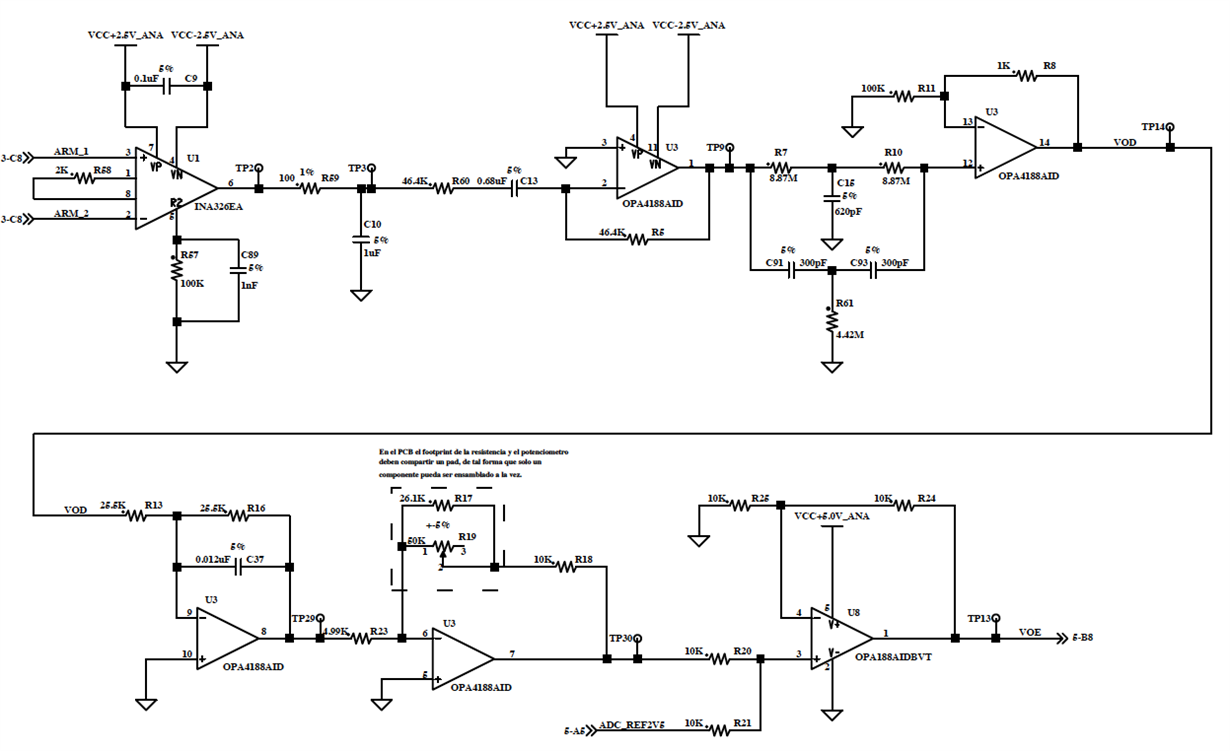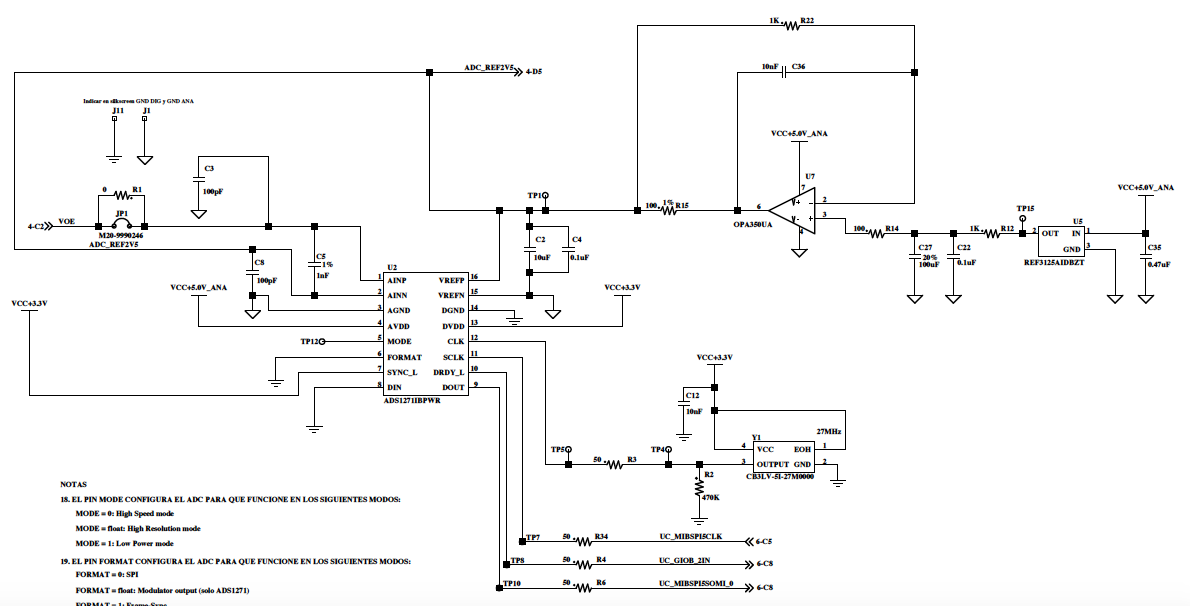Other Parts Discussed in Thread: INA326, , OPA188, INA188, INA333
Hi
Command attached the stage of filtering that is being used (the POT (R19) was modified by one of 200K since the gain was insufficient). Yesterday I did some measurements on all the TPs of the filters and detected something. Using the oscilloscope in DC I saw this:
- The output signal of the INA326 is with an offset of almost -2.5V (I do not understand why but the diagram proposed by the manufacturer is being used)
- The output signal of the High Pass is mounted on 0
- Notch output signal is mounted on 0
- The Low Pass filter signal is mounted on 0
- The output signal of the Inverter Amplifier is set to -200mV voltage, which varies depending on the gain but reaches -1V (I do not understand why this happens the truth). In filters 2,3,4 and 5 the OPA4188.
The output of the adder is mounted, depending on the gain of the amplifier, between 1.5 and 2V instead of about 2.5 as it should be. Texas Instruments OPA188 is used
I do not know the offset to what the truth is ... I already reviewed the Datasheet and I do not find that part ... will it be the configuration?
The signal at the INA output has an approximate 500mV offset and a ~60mV peak-peak signal mounted on the offset and in Pasa Altas has an amplitude of ~60mV peak-peak (depends on the input) mounted on 0. After the Notch is mounted at ~ -40mV and the amplitude was decreased despite having unity gain. The output of the Low Pass is mounted on ~ 20mV and the amplitude decreases a bit more (can we attribute those losses to the tolerances of the components).
I also attach the images with the problem.
and a closer look:
Where do the offsets come from?



